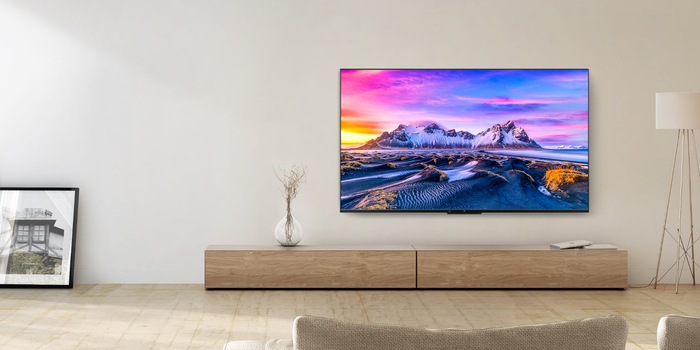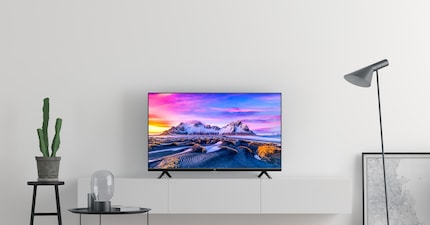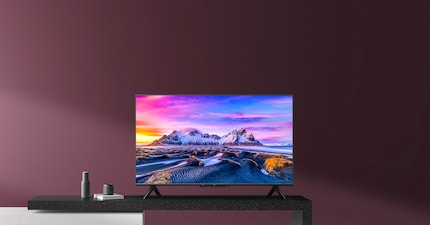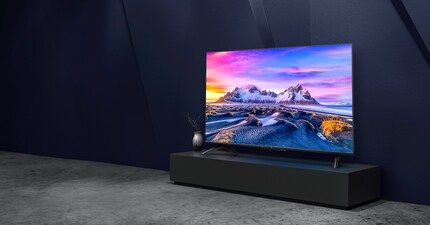
Background information
Colour, not pixel mass, makes the perfect picture
by Luca Fontana

Xiaomi has been involved in the European TV market since 2019. Their strategy: offering as much TV as possible for the lowest price. This hasn’t changed, even two years later.
At a press conference, Chinese tech giant Xiaomi unveiled its new TVs, currently being rolled out internationally. Namely the «Mi TV P1» series. The LCD TVs will be available in four sizes: 33", 43", 50" and 55". We still don’t know when exactly.
For picture and sound tech elitists, the P1 series is nothing. In terms of quality, it ranks solidly somewhere in the middle. Corresponding compromises have to be made in terms of hard and software. Although no prices have been officially named yet, the price-performance ratio should be fair, as is typical for Xiaomi. 600 to 700 francs for a 55-inch television, something like that.
You get what you pay for. And that’s totally fine.

The smallest P1 TV offers 1366 × 768 HD resolution and an 8-bit 60 Hz frame rate panel capable of displaying 16.7 million colours. Accordingly, the TV doesn’t support HDR, let alone Dolby Vision. Two 5-watt speakers which do support Dolby Audio and DTS-HD, each consisting of a tweeter and a woofer, provide sound with included bass. There are also three HDMI 2.0 inputs, one of them with ARC.
Android TV 9 serves as the operating system. Together with 1.5 GB RAM processors from MediaTek, this could lead to one or two jerks in smart TV operation. On connectivity: the TV is capable of Bluetooth 5.0 and dual-band Wi-Fi (2.4 GHz and 5 GHz).

At least the second-smallest P1 TV has UHD resolution at 3840 × 2160 pixels. It even supports HDR10 and Dolby Vision. Even though there’s no 10-bit panel installed, this being the actual gadget which comes up with the 1.07 billion colours that are actually required for an HDR display (article in German).
Nevertheless, Xiaomi still gets to advertise HDR and 1.07 billion colours using this nifty trick: the Chinese TV manufacturer uses an 8-bit panel with Frame Rate Control (FRC). Essentially, the panel can this way create the illusion of a third, non-existent colour by flashing between two colours rapidly. Thus, Xiaomi still gets its 1.07 billion colours, although the 8-bit panel can only display 16.7 million colours natively.
Two 10-watt speakers, including a tweeter and woofer each which support Dolby Audio and DTS-HD, take care of the sound. In terms of connectivity, there’s one HDMI 2.1 input with eARC and two HDMI 2.0 inputs. Nevertheless, the TV won’t be suited for passionate gamers since the panel only has a 60 Hz frame rate. At least Android TV 10 is used as the operating system. Together with 2 GB RAM processors from MediaTek, this could also lead to stutters in the smart TV operation.
On connectivity: the TV is capable of Bluetooth 5.0 and dual-band Wi-Fi (2.4 GHz and 5 GHz).

The two largest sizes can easily be grouped into one category, as apart from screen size they share the same specs: both have UHD resolution, support HDR10, HDR10+ and Dolby Vision, and use the same 8-bit FRC panel as the 43-inch variant.
Two 10-watt speakers set the tone here as well, including a tweeter and woofer each, still supporting Dolby Audio and DTS-HD. There’s also an HDMI 2.1 input with eARC and two HDMI 2.0 inputs. However, gamers will still be disappointed as the panel only offers a 60 Hz frame rate. Android TV 10 is used as the operating system. Again, MediaTek’s 2 GB RAM processor is probably not enough to ensure smooth smart TV operation.
On connectivity: the TV is capable of Bluetooth 5.0 and dual-band Wi-Fi (2.4 GHz and 5 GHz).
Xiaomi has no plans to tackle the flagship TV market. Not yet, anyway. This, despite the fact that the Chinese tech manufacturer keeps coming up with great, innovative ideas. Such as a transparent OLED TV for example, even if competitors Panasonic aren’t far behind.
In this country, however, we currently only have black rectangles that produce a picture, barely even worthy of the title «TV». At least from the perspective of a TV snob spoiled by quality. Still, why does Xiaomi do all this?
The main reason, presumably: foresight.
The Xiaomi brand is mainly known for smartphones – at least in Europe. However, Xiaomi wants to be much more than a smartphone manufacturer. Namely, a tech company that serves an entire tech ecosystem. From smartphones to TV, via the smartwatch and air purifiers, to e-scooters or the vacuum cleaner. All of this creates recognition value.
The reasoning behind this is that whoever gains from clientele in one area has a good chance of receiving a certain amount of trust in other areas as well. If you buy a Xiaomi TV, you’ll probably also buy a Xiaomi soundbar and a Xiaomi smartphone. This kills two birds with one stone: Xiaomi creates brand awareness and fosters loyalty.
Let’s see what happens when the transparent OLED arrives.
I write about technology as if it were cinema, and about films as if they were real life. Between bits and blockbusters, I’m after stories that move people, not just generate clicks. And yes – sometimes I listen to film scores louder than I probably should.
From the latest iPhone to the return of 80s fashion. The editorial team will help you make sense of it all.
Show all